Abstract
1. Preparations were developed whereby the hypogastric ganglion of the rat or guinea-pig was perfused through its vasculature with saline solutions. Drugs were injected into the perfusion stream, and their effects were indicated by contractions of the vas deferens. The base of this organ could be ligated to prevent the drugs reaching the smooth muscle via the blood vessels. For comparison, experiments were also performed on fully isolated preparations of the rat and guinea-pig hypogastric nerve-vas deferens, where the vas deferens was held in an inner bath, so that drugs added to the outer bath could act only on the ganglion. Attempts were made to demonstrate non-nicotinic receptors in these preparations.
2. It was shown that the perfused hypogastric ganglion of the guinea-pig would respond repeatedly to several nicotinic stimulants, though autodesensitization eventually occurred. The fully isolated preparation behaved similarly, but desensitized much more rapidly. In contrast, the rat ganglion, either perfused or fully isolated, was remarkably insensitive to nicotinic stimulant drugs.
3. Neither species responded well to non-nicotinic stimulants; that from the guinea-pig gave small contractions to methacholine in about 33% of cases, but did not respond to (4-m-chlorophenyl-carbamoyloxy)-2-butynyl trimethylammonium chloride (McN-A-343). With the rat, the situation was opposite.
4. The guinea-pig ganglion did not become more sensitive to non-nicotinic stimulants after some treatments known to sensitize the cat superior cervical ganglion. These include preganglionic tetanization, chronic decentralization, and removal of all potassium. Sensitization did occur, however, in the presence of physostigmine, after tachyphylaxis to dimethyl phenyl piperazinium iodide (DMPP) had developed, and when the preparation was perfused with a suspension of washed erythrocytes.
5. It is concluded that the responses of sympathetic ganglia vary from one species to another, and according to whether the organs are perfused or fully isolated.
Full text
PDF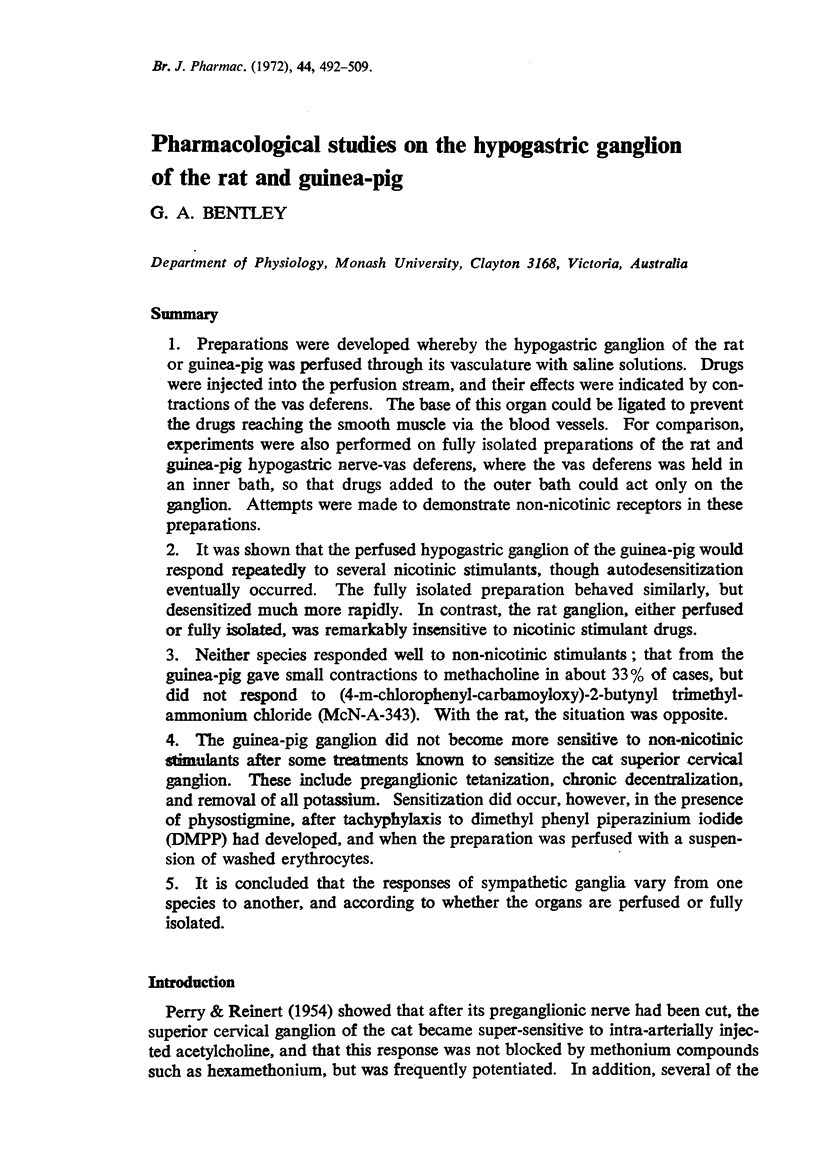


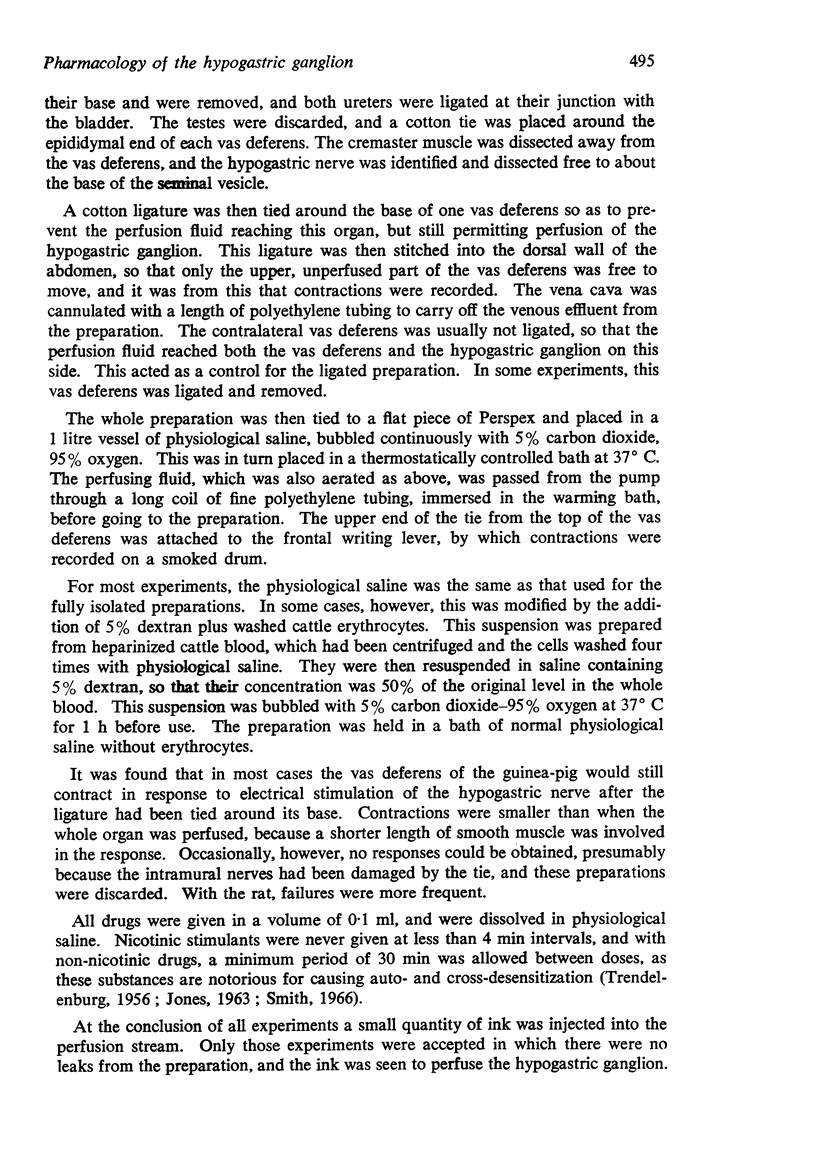
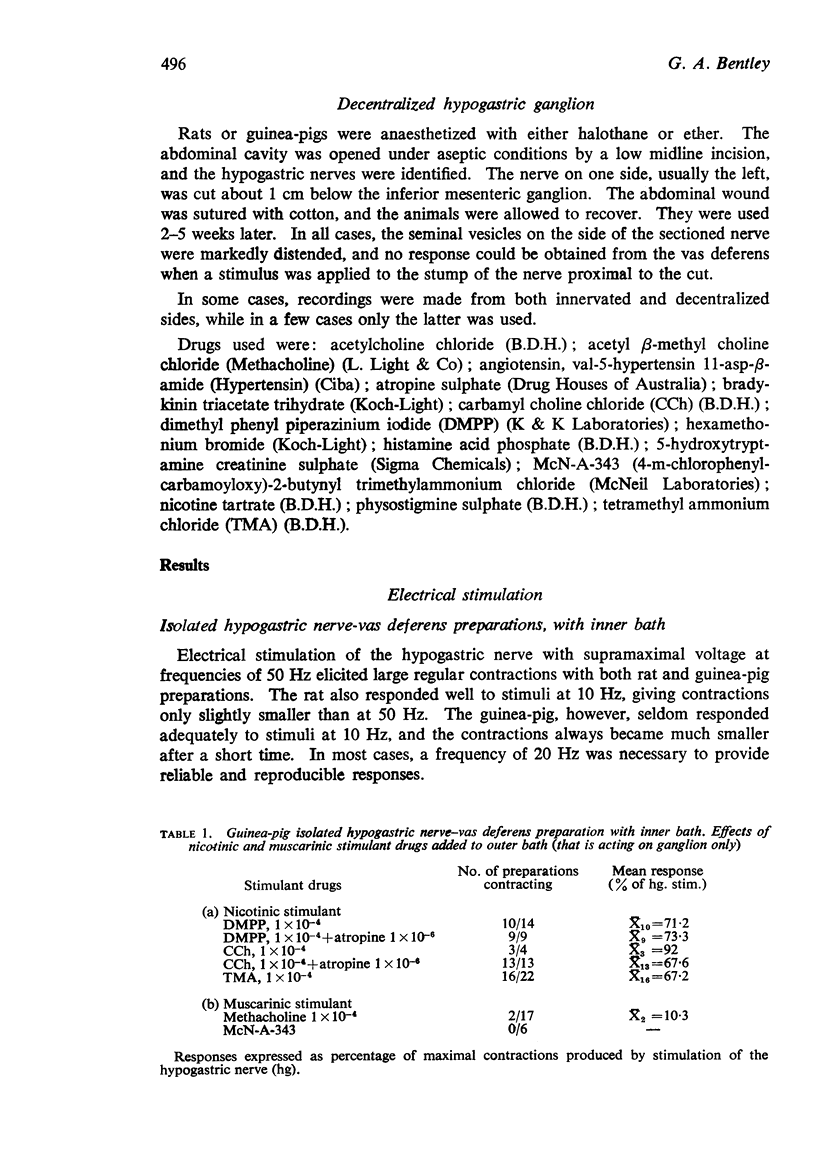
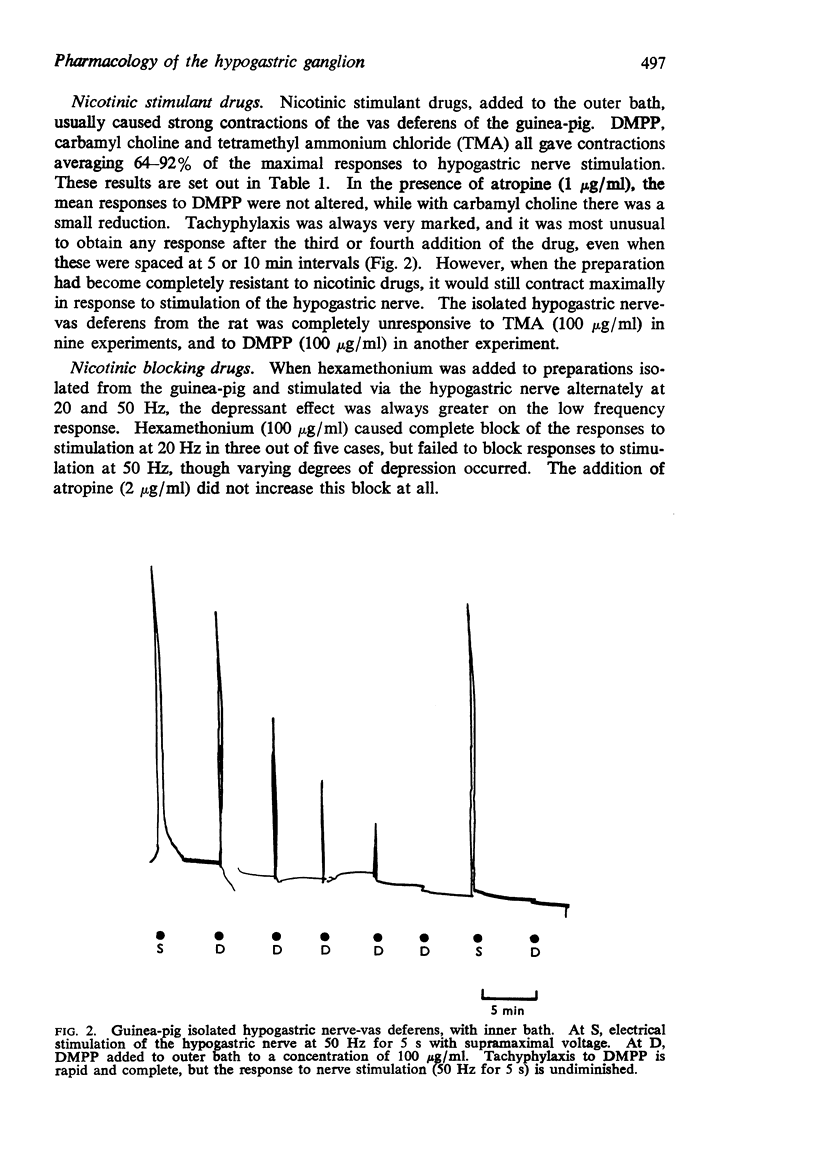
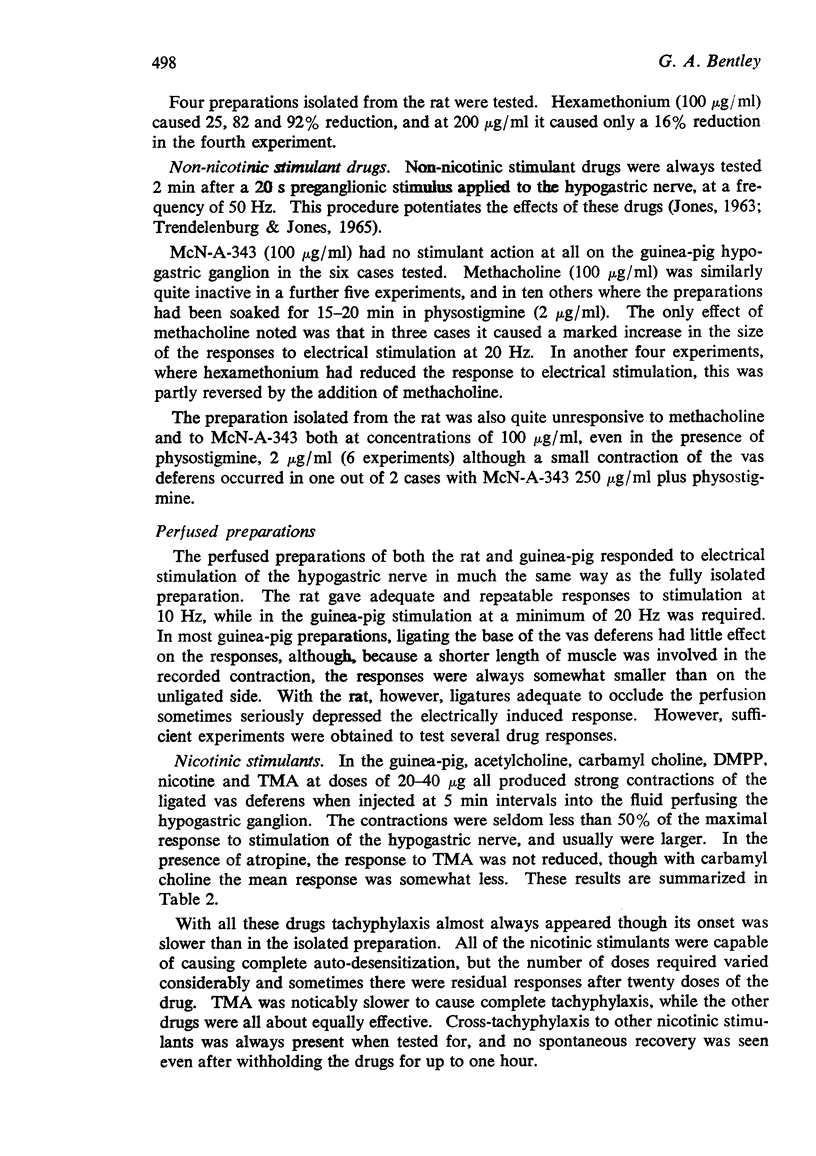
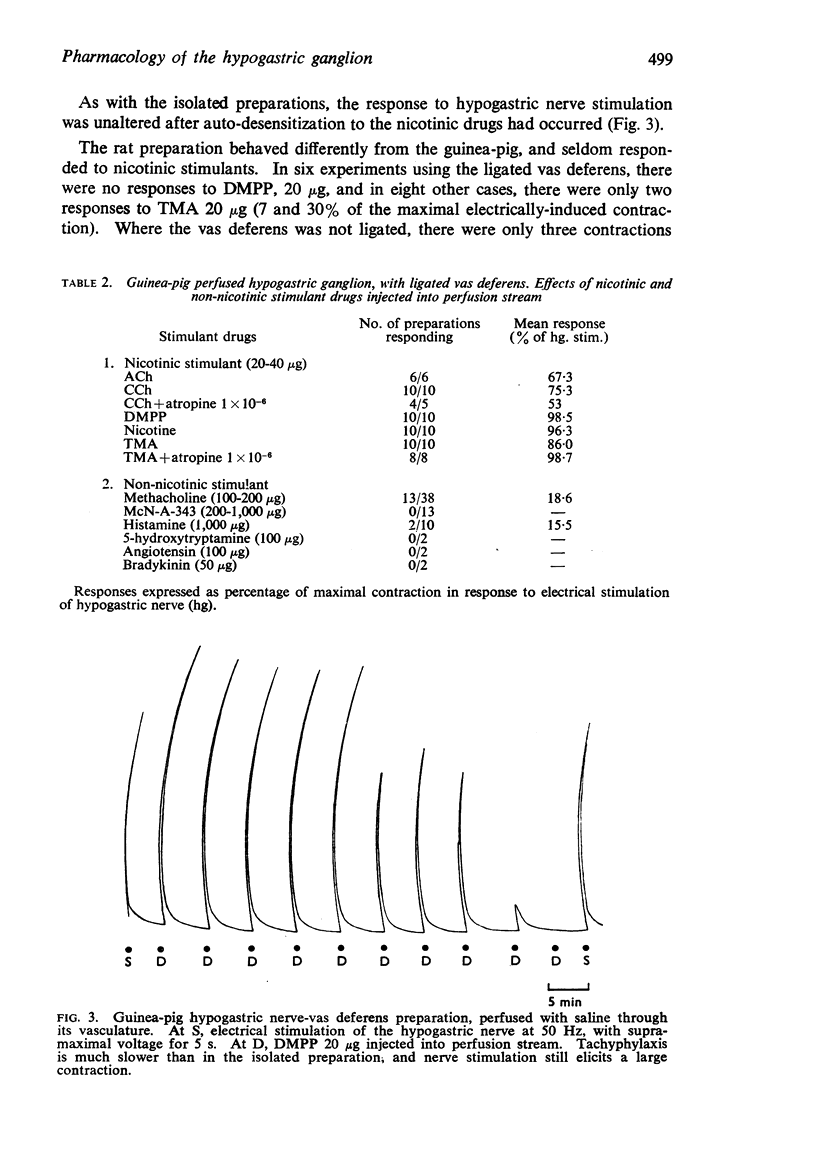
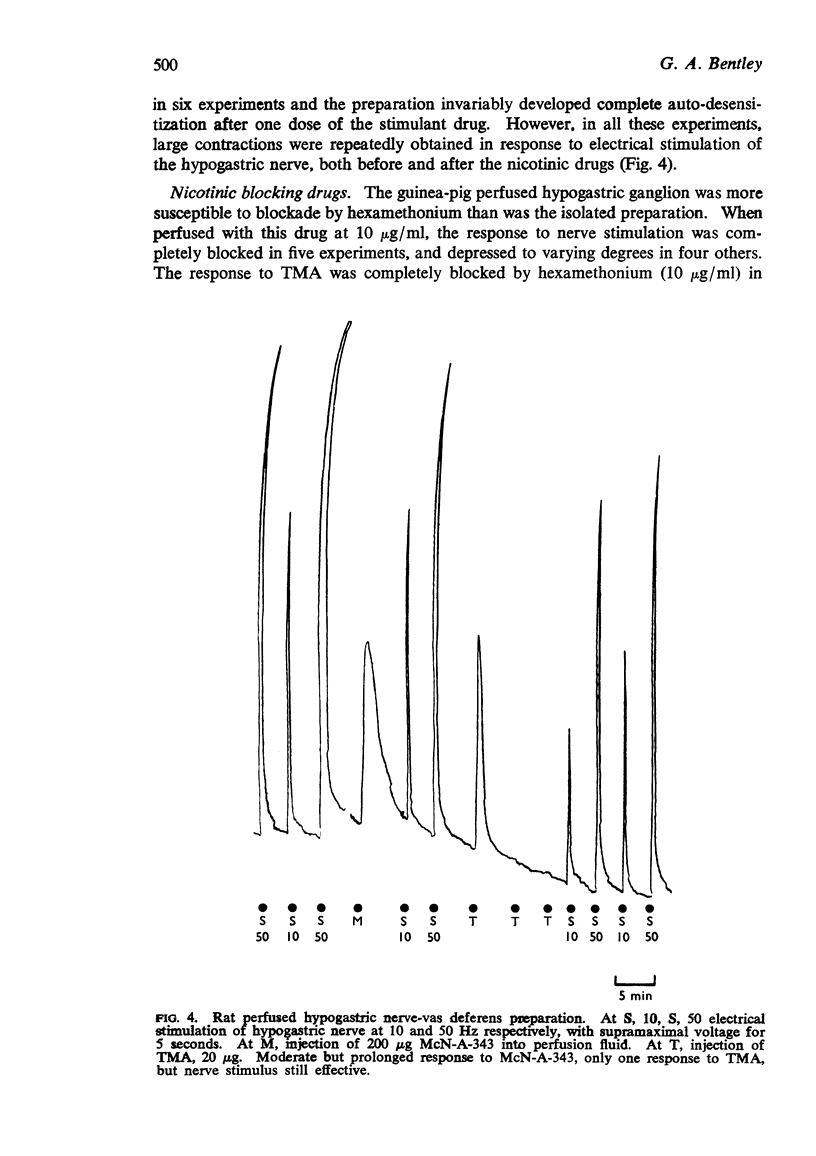

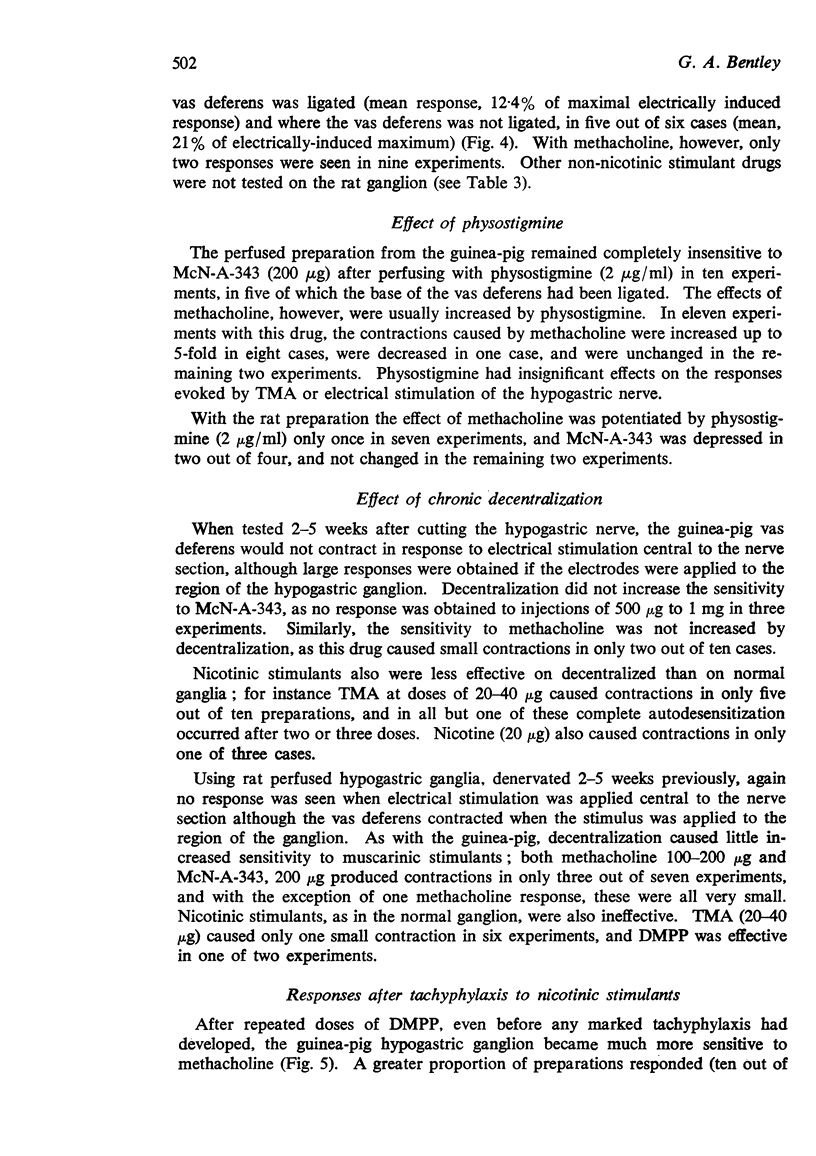
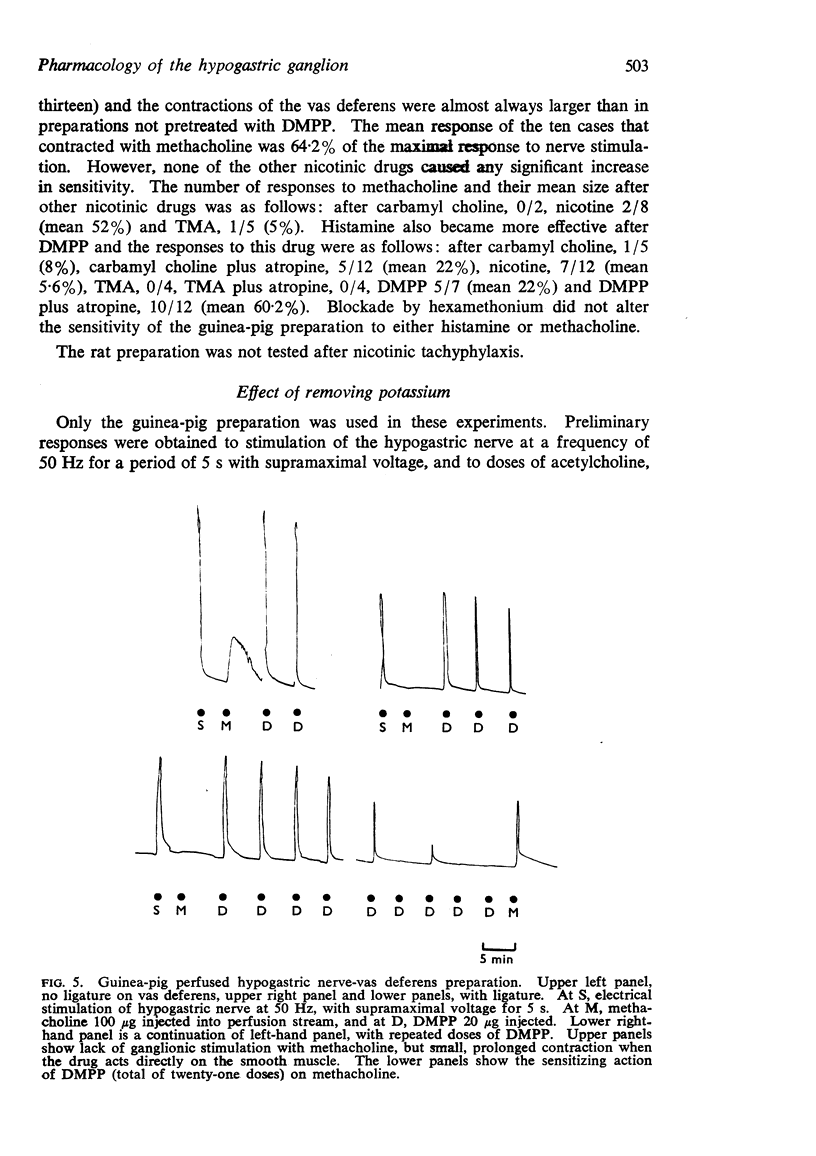

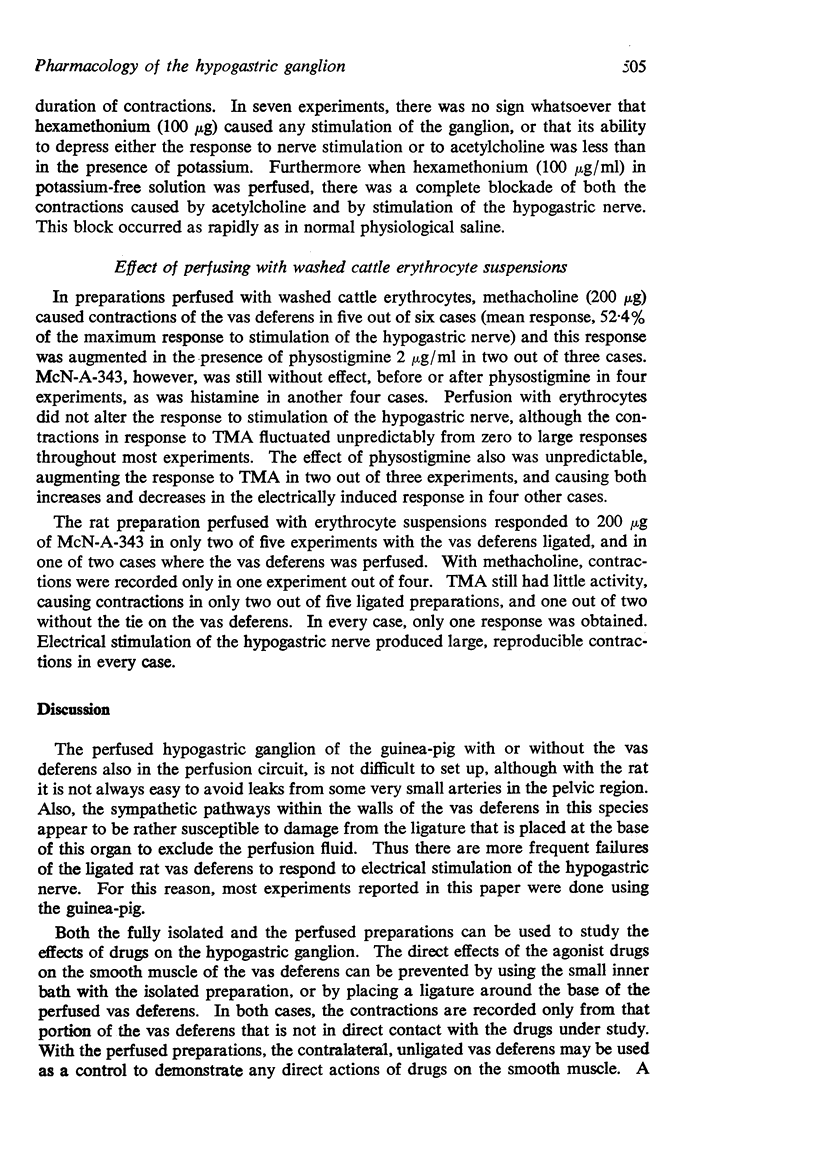
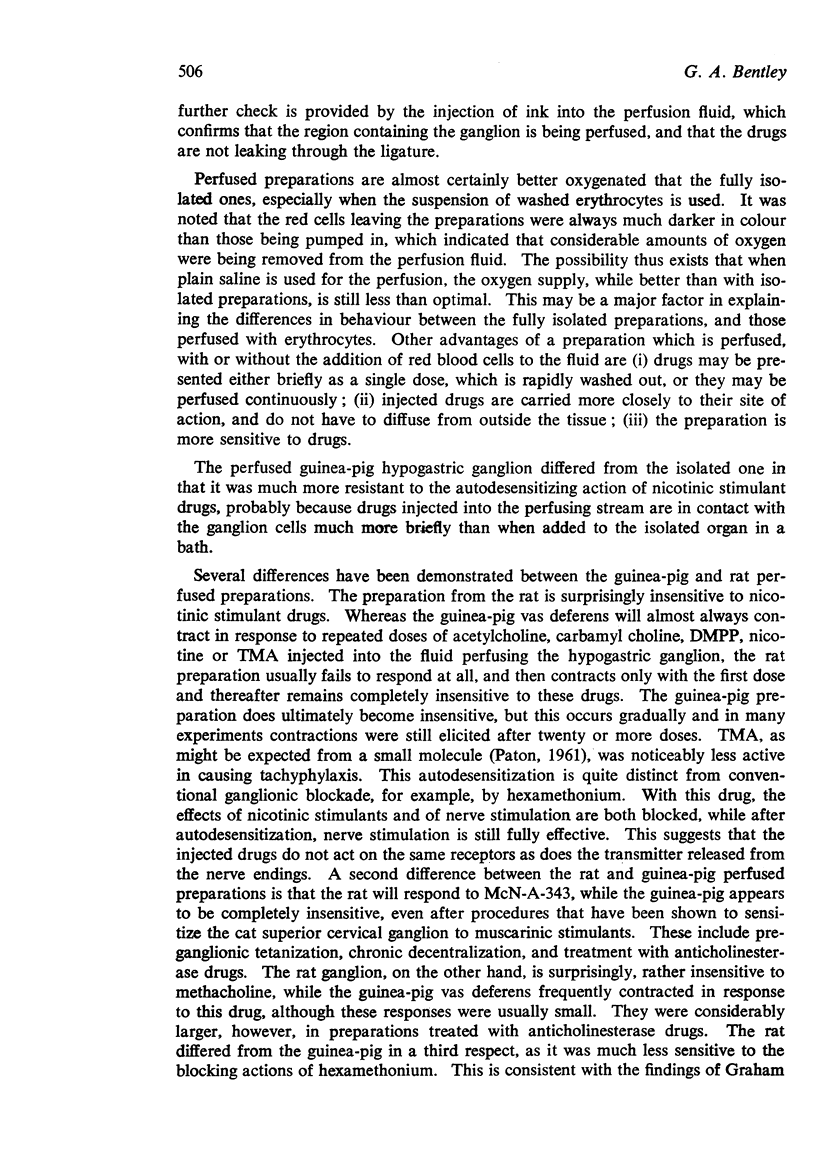
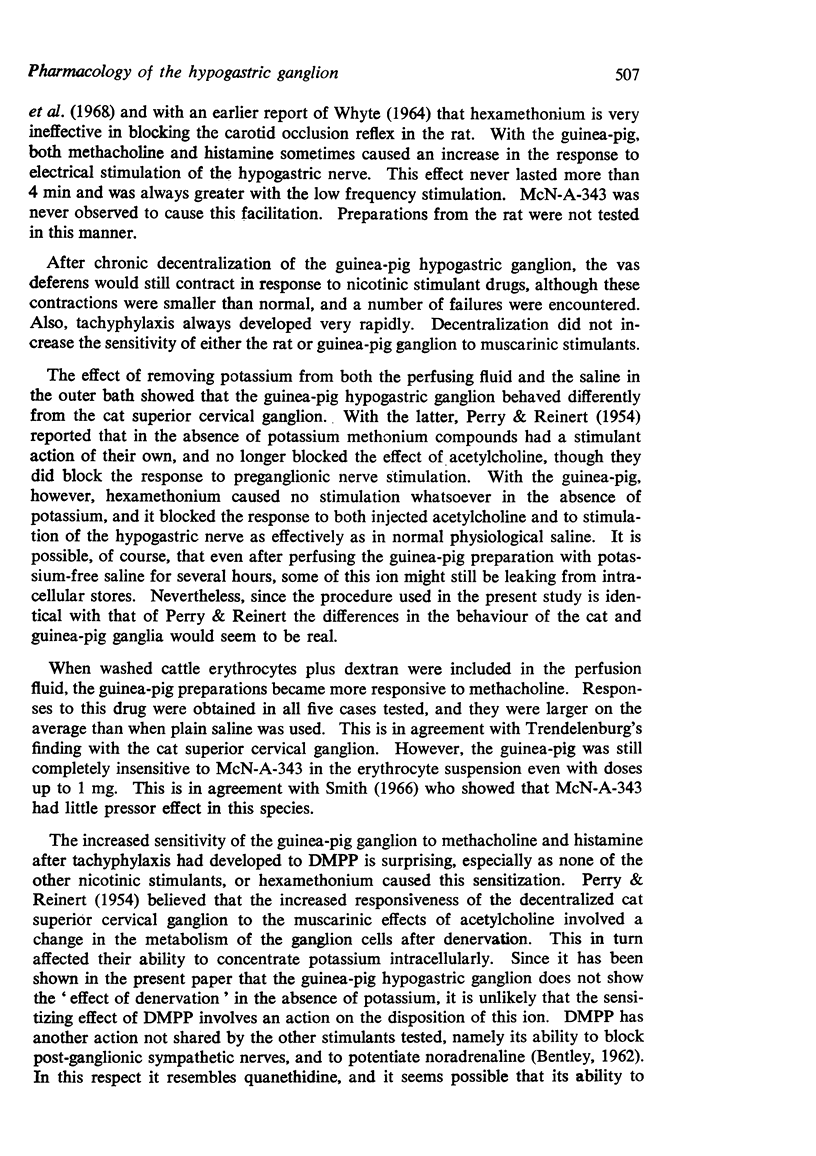
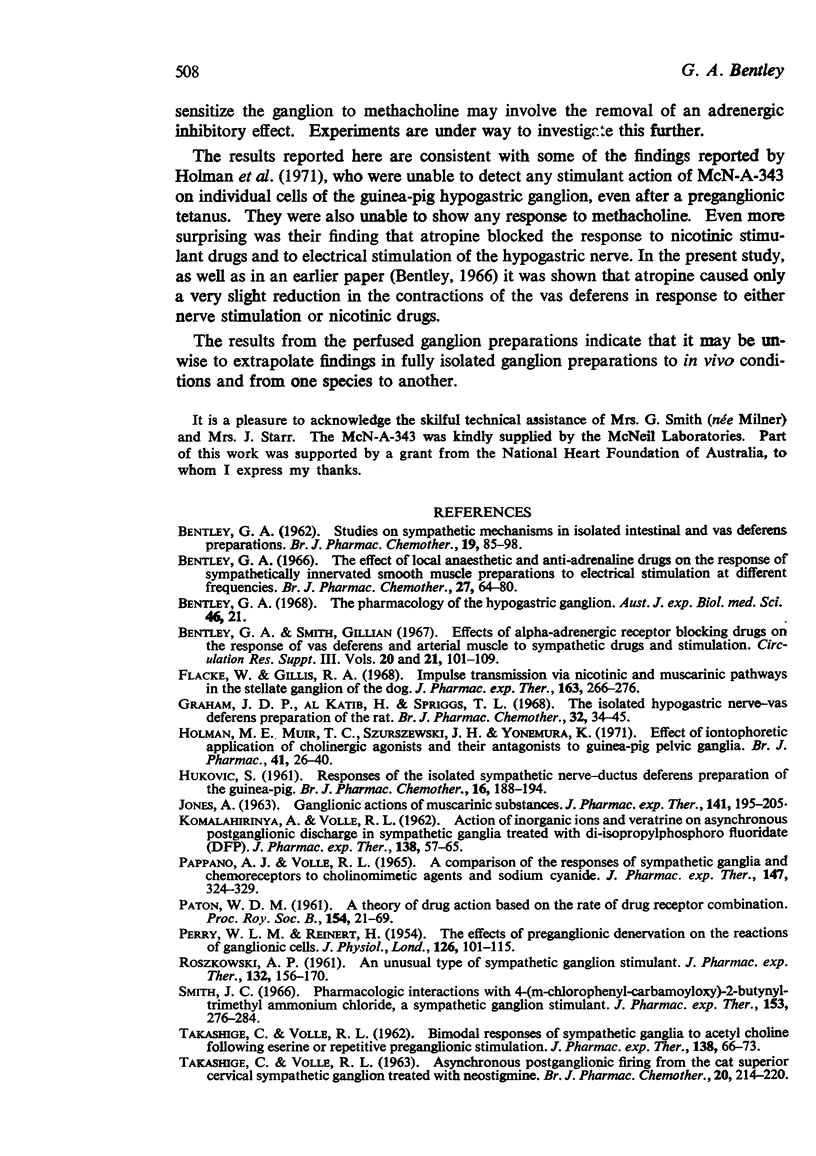
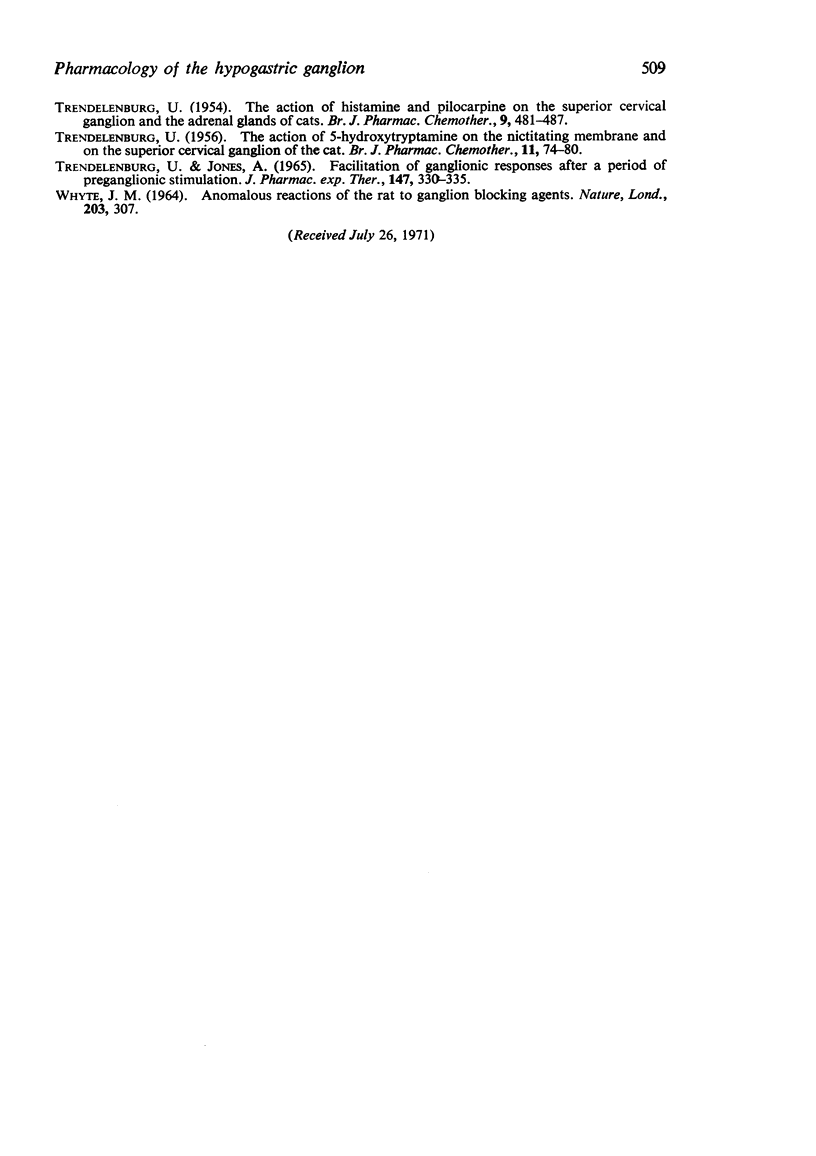
Selected References
These references are in PubMed. This may not be the complete list of references from this article.
- BENTLEY G. A. Studies on sympathetic mechanisms in isolated intestinal and vas deferens preparations. Br J Pharmacol Chemother. 1962 Aug;19:85–98. doi: 10.1111/j.1476-5381.1962.tb01429.x. [DOI] [PMC free article] [PubMed] [Google Scholar]
- Bentley G. A. The effect of local anaesthetic and anti-adrenaline drugs on the response of sympathetically innervated smooth muscle preparations to electrical stimulation at different frequencies. Br J Pharmacol Chemother. 1966 May;27(1):64–80. doi: 10.1111/j.1476-5381.1966.tb01642.x. [DOI] [PMC free article] [PubMed] [Google Scholar]
- Flacke W., Gillis R. A. Impulse transmission via nicotinic and muscarinic pathways in the stellate ganglion of the dog. J Pharmacol Exp Ther. 1968 Oct;163(2):266–276. [PubMed] [Google Scholar]
- Graham J. D., al Katib H., Spriggs T. L. The isolated hypogastric nerve-vas deferens preparation of the rat. Br J Pharmacol Chemother. 1968 Jan;32(1):34–45. doi: 10.1111/j.1476-5381.1968.tb00427.x. [DOI] [PMC free article] [PubMed] [Google Scholar]
- HUKOVIC S. Responses of the isolated sympathetic nerveductus deferens preparation of the guinea-pig. Br J Pharmacol Chemother. 1961 Apr;16:188–194. doi: 10.1111/j.1476-5381.1961.tb00312.x. [DOI] [PMC free article] [PubMed] [Google Scholar]
- Holman M. E., Muir T. C., Szurszewski J. H., Yonemura K. Effect of iontophoretic application of cholinergic agonists and their antagonists to guinea-pig pelvic ganglia. Br J Pharmacol. 1971 Jan;41(1):26–40. doi: 10.1111/j.1476-5381.1971.tb09932.x. [DOI] [PMC free article] [PubMed] [Google Scholar]
- JONES A. GANGLIONIC ACTIONS OF MUSCARINIC SUBSTANCES. J Pharmacol Exp Ther. 1963 Aug;141:195–205. [PubMed] [Google Scholar]
- KOMALAHIRANYA A., VOLLE R. L. Actions of inorganic ions and veratrine on asynchronous postganglionic discharge in sympathetic ganglia treated with diisopropyl phosphorofluoridate (DFP). J Pharmacol Exp Ther. 1962 Oct;138:57–65. [PubMed] [Google Scholar]
- PAPPANO A. J., VOLLE R. L. A COMPARISON OF THE RESPONSES OF SYMPATHETIC GANGLIA AND CHEMORECEPTORS TO CHOLINOMIMETIC AGENTS AND SODIUM CYANIDE. J Pharmacol Exp Ther. 1965 Mar;147:324–329. [PubMed] [Google Scholar]
- PERRY W. L., REINERT H. The effects of preganglionic denervation on the reactions of ganglion cells. J Physiol. 1954 Oct 28;126(1):101–115. doi: 10.1113/jphysiol.1954.sp005196. [DOI] [PMC free article] [PubMed] [Google Scholar]
- ROSZKOWSKI A. P. An unusual type of sympathetic ganglionic stimulant. J Pharmacol Exp Ther. 1961 May;132:156–170. [PubMed] [Google Scholar]
- TAKESHIGE C., VOLLE R. L. Asynchronous postganglionic firing from the cat superior cervical sympathetic ganglion treated with neostigmine. Br J Pharmacol Chemother. 1963 Feb;20:214–220. doi: 10.1111/j.1476-5381.1963.tb01311.x. [DOI] [PMC free article] [PubMed] [Google Scholar]
- TAKESHIGE C., VOLLE R. L. Bimodal response of sympathetic ganglia to acetylcholine following eserine or repetitive preganglionic stimulation. J Pharmacol Exp Ther. 1962 Oct;138:66–73. [PubMed] [Google Scholar]
- TRENDELENBURG U., JONES A. FACILITATION OF GANGLIONIC RESPONSES AFTER A PERIOD OF PREGANGLIONIC STIMULATION. J Pharmacol Exp Ther. 1965 Mar;147:330–335. [PubMed] [Google Scholar]
- TRENDELENBURG U. The action of 5-hydroxytryptamine on the nictitating membrane and on the superior cervical ganglion of the cat. Br J Pharmacol Chemother. 1956 Mar;11(1):74–80. doi: 10.1111/j.1476-5381.1956.tb01031.x. [DOI] [PMC free article] [PubMed] [Google Scholar]
- TRENDELENBURG U. The action of histamine and pilocarpine on the superior cervical ganglion and the adrenal glands of the cat. Br J Pharmacol Chemother. 1954 Dec;9(4):481–487. doi: 10.1111/j.1476-5381.1954.tb00865.x. [DOI] [PMC free article] [PubMed] [Google Scholar]
- WHYTE J. M. ANOMALOUS REACTIONS OF THE RAT TO GANGLION BLOCKING AGENTS. Nature. 1964 Jul 18;203:307–307. doi: 10.1038/203307a0. [DOI] [PubMed] [Google Scholar]


